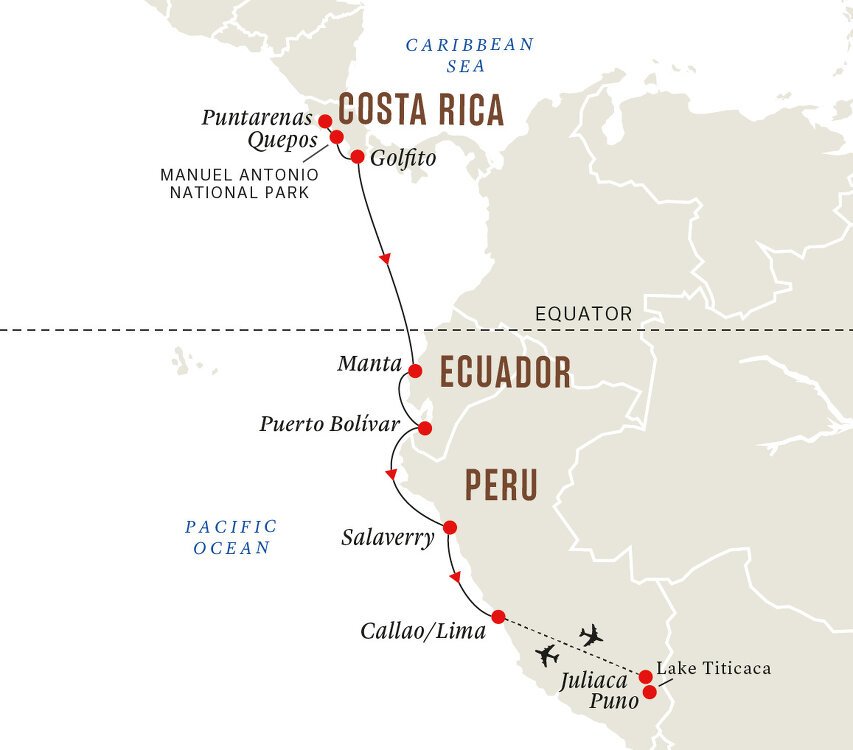Overview
Itinerary
Your hybrid-powered expedition ship MS Fridtjof Nansen awaits you in Puntarenas, a city on a needle-like strip of land on the Pacific coast of Costa Rica. City slickers from San José normally nip to Puntarenas for the day to get their fix of relaxed coastal life and fresh ocean air. While it is still an active fishing port, Puntarenas mainly acts as a transit point for people on their way elsewhere in the region, such as to the white-sand beaches of Nicoya Peninsula or the waterfall-rich Tortuga Island.
Once on board the ship, you'll be busy picking up your complimentary expedition jacket, settling into your cabin, exploring the ship and attending a mandatory safety drill. After dinner and a welcome toast by the Captain, you'll meet your Expedition Team who run through important health and safety aspects with you.
Arrange to arrive early for an overnight in San José and explore the Tárcoles River and mangrove forest during a boat tour before embarkation or join our 4-days Pre-Programme to the magnificent Volcano Arenal Area to explore the flora and fauna of Costa Rica, and relax in volcanic natural hot springs.
You'll find that the town of Quepos and its surroundings come packed with plenty of things to see and do. The many boats in the pretty Marina Pez Vela cater for big game sport fishing that Quepos is synonymous with. Around the central plaza are six blocks of restaurants, galleries and shops and there is a choice of water sports on the mile-long Playa Espadilla.
The big attraction of Quepos though is its proximity to Manuel Antonio National Park. This is one of the most popular national parks in Costa Rica and ranks in the Forbes list of top 12 most beautiful national parks in the world. The park boasts impressive views of mountains, mangroves, lagoons, beaches, and tropical forest. With 350 species of birds and 109 species of mammals, it is often described as an ‘outdoor zoo' by visitors. Following the breathtaking Perezoso trail, you can hope to spot scarlet macaws, toucans, hawks, four species of monkey, sloths, iguanas and armadillos.
The relaxed town of Golfito sits sheltered in the blissfully beautiful Golfito Bay, which in turn lies within the larger Golfo Dulce. You can enjoy the views from seaside marinas or better yet, take the scenic hiking trails that go up into the wildlife refuge on the hill and beyond to Piedras Blancas National Park. As you explore the lush rainforest, you'll come across pretty waterfalls and possibly spy toucans, macaws, the blue morpho butterfly, anteaters, sloths, mantled howler monkeys and more. The calm waters around the bay also make it ideal to tour the local mangroves and visit isolated beaches via kayak as part of an optional excursion.
Once a prime region for banana exports, Golfito has since switched its economy to palm oil plantations and sport fishing. Anglers of all ages stay at boutique resorts and chic eco-lodges around Golfito, going out on the many boats during the day in the hopes of catching an iconic Pacific Sailfish. If you're looking for a bargain, you could check out the town's duty-free centre that regularly draws both visitors and locals alike on shopping sprees.
Enjoy the serenity of this day at sea, relaxing and admiring the scenery from the observation deck or over in the lounge.
Throughout your journey, the Expedition Team will be running lectures in the Science Center to share their extensive knowledge of the region with you. Topics could include periods of pre-Columbian history, the geology of the surrounding mountains and islands, folklore of local communities, and so on. But not all lectures are confined to indoors. If the ship attracts seabirds who come to fly alongside us, the Expedition Team might also help you spot and identify these feathered followers out on deck.
As we cross the Equator, it's the tradition of Norwegian sailors to hold a ceremony to seek King Neptune's blessing. If we're in luck, he may even make an appearance.
Manta is a busy and prosperous port city with high-rise buildings, resort hotels, and a couple of casinos. It is well known in the world of water sports for its long stretches of beach that are blessed with the kind of wind and waves that draw surfers, body-boarders and kitesurfers from across the globe. Casual beachgoers normally hang around the shops, restaurants and bars of Malencón Escénico at Playa el Murcielago. You can also head to San Lorenzo for surfer-sweet swells or to Playa Bonita at Santa Marianita to watch kitesurfers take off into sea and sky.
Aside from tourism, the city thrives on an industry of tuna fishing and canning, and typically for a coastal city, seafood is the speciality of many restaurants in the area. Expect wild-caught succulent shrimp, black clams, octopus, red snappers and so on. You should make a point to try a bowl of the local encebollado broth made with the fresh tuna Manta is so proud of. The Museo Municipal Etnográfico Cancebi showcases Ecuadorian art and artefacts from local pre-Colombian civilisation, including ancient fishing tools. You might also like to visit the nearby handicraft town of Montecristi where traditional Panamanian straw hats were first created and still hand woven to this day.
Machala's main claim to fame is Puerto Bolivar, an important Ecuadorian port for the export of coffee, cocoa, shrimp and bountiful bananas which the locals call oro verde – ‘green gold'. As part of a choice of optional excursions, you can visit a local banana plantation and also try and spot hummingbirds, parakeets and howler monkeys in Buenaventura Nature Reserve to the south. Puyango Petrified Forest is nearby with one of the largest collections of fossilised trees in the world, thought to be about 100 million years-old, as old as the Andes Mountains themselves.
At Puerto Bolivar, you can feast on fresh seafood at one of the many harbour restaurants and enjoy views of the natural mangrove swamps of Isla Jambeli opposite. Machala itself has all the charm you'd expect from a small coastal city, including friendly locals, cute plazas and unusual monuments dedicated to sort-fish and bananeros. The restaurants are evolving and beginning to dabble in the hip modern cuisine which Ecuador and Peru are increasingly known for.
As we leave Ecuador behind and set sail for Peru, enjoy another day at your leisure aboard the ship. Take advantage of the many onboard facilities or join in on lectures as we prepare you for what's still to come.
To fully relax during your downtime on board, there's no better place than the Wellness Center. Feel the knots in your muscles disappear during a massage or pamper yourself with a few skin-scrubbing treatments. And if the warm weather hasn't opened up your pores, a session in the sauna is bound to do the trick. You could also slip into your bathing suit and lie back into the bubbles of the outdoor hot tubs or bask in a state of zen during a guided meditation class. Whatever you decide to do, you're sure to be stress-free and revitalised for the remaining adventure.
Buffeted by the wind and waves of the Pacific, Salaverry can be a hard port to access. If all goes to plan though, it will be a good transit point to explore Trujillo, Peru's third largest city, as well as an array of archaeological sites scattered throughout the surrounding region.
Trujillo sits in a fertile valley oasis irrigated by the Moche River. It boasts a colourful baroque 17th century cathedral, 10 colonial churches, and many neoclassical mansions, not to mention one of the longest mosaic murals in the world at the local university. However, it is more than likely that your focus will be elsewhere and on things not so modern.
The city of Chan Chan was raised by the Chimu Empire which appeared in the region around 900 AD. The vast ruins of the 20-square kilometre complex include the Tschudi temple-citadel and Huaca Esmeralda. On the other side of Trujillo are the Mochican pyramids of the Sun and the Moon which pre-date Chan Chan by a few hundred years. Huaca del Sol in particular is the largest adobe structure on the continent while Huaca del Luna is more detailed with many of its pastel frescos still visible.
After you disembark in Callao and say your farewells to the ship and its crew, we transfer you to Lima airport for your flight to Juliaca. This city is located on the windy Collao Plateau, 3,825 metres above sea level. You'll meet our local guide at the airport and set off on a one-hour drive through Juliaca to your hotel. Along the way, you might glimpse such sights as Santa Catalina Church in the Plaza de Armas, the Romanesque Franciscan Convent atop Cerro Santa Bárbara, or the White Christ effigy gazing out over the city from Waynaruqi Hill.
Your hotel in the city of Puno, located right on the shore of lovely Lake Titicaca, will be your home for the next two days. Spend the rest of your day admiring the deep-blue colour of the lake and exploring the area at your leisure. Nights can get pretty cold here, so remember to bring a jacket if you plan on an evening walk. Dinner is served at your hotel.
It is finally time to explore Lake Titicaca by boat, the birthplace of the sun and the Incas according to ancient Andean belief. Over 280 metres deep and 8,300 square kilometres across, welcome to the largest lake in South America, 15 times the size of Switzerland's Lake Geneva and even bigger than Lake Tahoe in the US. At 3,810 metres above sea level, it is also the highest navigable body of water in the world. Surrounded by mountains and yellow grass reeds, more than 25 rivers stream into the freshwater lake which, when placid, seems to perfectly reflect the blue skies above like one vast mirror.
Our first stop of the day is the floating islands of the Uru people, built to allow them to move away if threatened by their enemies. These incredible islands are entirely handmade by the Uru, woven together from buoyant totora reeds that grow in the shallows of the lake. Each islet houses between one and ten families and takes months to complete. They last a decade or so but must be continuously maintained with new layers. You'll learn about the other fascinating uses of the reeds by the local community during your visit, ranging from huts, boats, and toys. Even walking on the soft and springy ground will be quite the experience!
You'll continue by boat to the rural community of Llachón on the scenic shores of Capachica peninsula. The panoramic views of the lake from here are enough to take your breath away. Your included activity here is a guided kayaking tour, admiring the sandy beaches of the peninsula and looking out for Titicaca's 60 species of bird, 14 native fish species and 18 types of amphibian. You'll also join a guided walk through the village to learn about the agricultural way of life here. Observe arts and crafts and share a typical Andean lunch with one of the local families. Afterwards, we make our way back to Puno for a relaxing evening with dinner at the hotel.
After enjoying breakfast at the hotel, you get to discover the area on a half-day excursion to Chucuito and Aramu Muru.
Chucuito was once an important colonial-era town where royal taxes were collected before being transported to Lima. Nowadays, it is a quiet village with two attractive 16th century colonial churches, Santo Domingo and Nuestra Señora de la Asunción, and an ancient solar clock around the town square. To the north of the square is a lookout point that promises splendid views of the surrounding landscape. You may visit a nearby trout hatchery to see how the region's speciality of trucha are grown and enjoy horseback riding with a local family outside of town. Most visitors are also intrigued by the small archaeological landmark of Inca Uyo. The site claims to be the remains of an ancient temple of fertility, although not all experts agree its status is bona fide. Regardless, the row upon row of 86 phallic granite statues is an amusing sight to see and maybe even count!
We make a stop at the mysterious Aramu Muru, an unfinished T-shaped doorway carved into solid rock. The mystical site has inspired local legends of people disappearing through it and supposed sights of the doorway opening to tall men carrying glowing balls of light. Some excitedly speculate it is some kind of paranormal or extra-terrestrial portal, prompting pilgrimages here by those who refer to it by its other name: Puerta de Hayu Marca, the Gate of the Gods.
Before heading to the airport, there'll be time though to stop at Sillustani tombs, a pre-Incan cemetery 3,890 metres above sea level, surrounded by Lake Umayo. The tombs or chullas were built above ground by the ancient Colla people, creating tower-like structures as tall as 12 metres to hold the entire families of its society's elite.
Before the visit, enjoy a picnic lunch served in Sillustani at the shores of the lake.
After exploring the cemetery, we continue to Juliaca airport for your flight to Lima where our local guide will transfer you to your hotel. Enjoy the evening at your leisure.
Sadly, this is the last day of your expedition and it officially ends after breakfast at the hotel when you'll say farewell to your fellow explorers. Seeing as you're already here, we recommend extending your holiday for a few days to spend more time in the Peruvian capital which was known as La Ciudad de los Reyes, or ‘The City of Kings'.
The UNESCO World Heritage historic centre is full of colonial-era architecture like Plaza Mayor and San Francisco Monastery. On the other hand, the clay ruins of ceremonial pyramids Huaca Pucllana and Huaca Huallamarca are reminders of long-lost Inca civilisation. For more pre-Columbian archaeology, there are at least four separate museums to pick from. Arty types among you will also enjoy the bright and Bohemian area of Barranco, complete with murals, creative cafés and two of Lima's contemporary art museums.
But the ultimate Lima experience has got to be the food. Cuisine emanating from the capital has raised the bar the globe over and there is no shortage of internationally recognised and award-winning restaurants for you to delight in. One of Peru's all-time gastronomic greats is ceviche, fresh fish marinated in tangy lime juice and other seasonings. The staple dish can be savoured in many locations around the city, from up-market diners in Miraflores to salt-of-the-earth cevicherías at the fishing docks over in Chorrillos.
Life Onboard MS Fridtjof Nansen
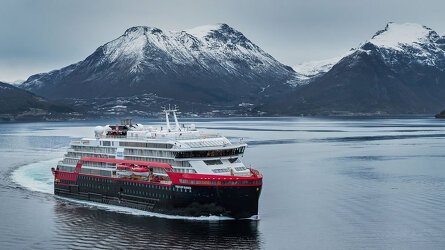
Step aboard this hybrid-powered expedition ship to explore remote corners of the globe in complete comfort. Read more

Your dedicated team deliver an educational onboard program and exciting shore excursions to enrich your expedition. Read more
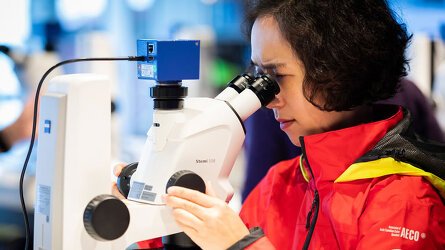
Step into the Expedition Team's headquarters and enjoy specialist lectures and interactive workshops. Read more
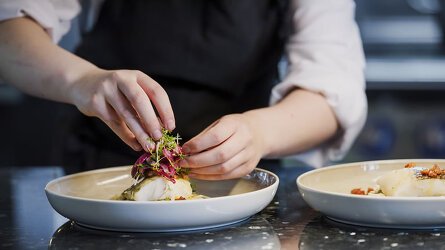
Dine on international dishes and menus inspired by Hurtigruten's Norwegian heritage in the three onboard restaurants. Read more
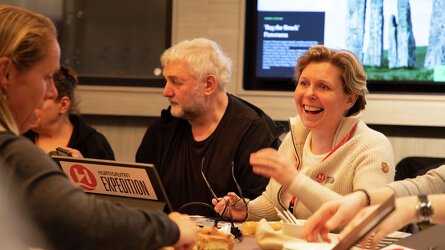
Feel right at home with a sense of comfort and contentment as Hurtigruten share with you the sentiment of 'hygge'. Read more
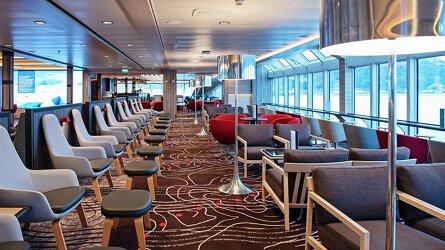
MS Fridtjof Nansen takes the scenic route, and is equipped with viewing spaces to enjoy the views in any weather. Read more

Availability Click on prices below to view cabin upgrades and details
Tour & cruises prices are per person. Prices shown have savings applied, are subject to availability and may be withdrawn at any time without notice. Prices and trip information are correct at the time at this point in time, however are subject to confirmation at the time of booking and are subject to change by Hurtigruten. For cruise itineraries, cabin images are sourced from Hurtigruten. These should be treated as indicative only. Cabin inclusions, upholsteries and room layout may differ to the image(s) shown depending on the ship selected and your sailing dates.
Similar Cruises
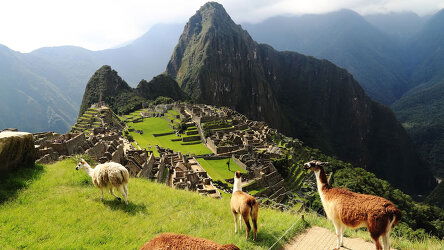
13 Days Colon Lima
Operated By: Hurtigruten
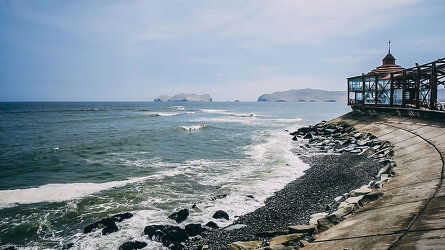
13 Days Lima Valparaiso
Operated By: Hurtigruten
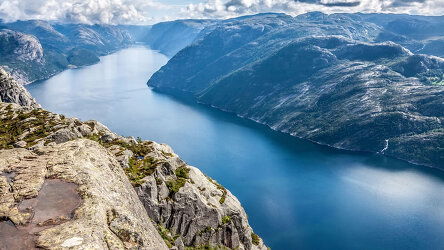
13 Days Hamburg Reykjavik
Operated By: Hurtigruten
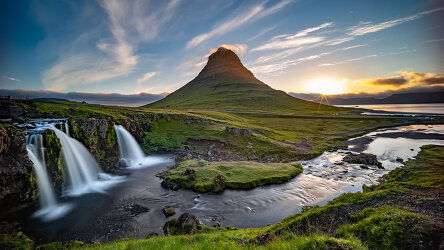
13 Days Reykjavik Oslo
Operated By: Hurtigruten



